- 1.Fever In The Funkhouse
Funk Brothers's Blog
The Snake Pit
Posted on November 13, 2008 at 11:00pm 2 Comments 0 Likes
In the 1960's an independent record company in Detroit, Michigan began creating and marketing hit records better and in larger volume than any record company in the world. The name of this record company was Motown. The recording techniques that were developed by Motown in the mid 60's were part of the formula for the company's success. Even today, many of the recording techniques used find…
ContinueMusic
Standing In The Shadows..
Profile Information
- How Did You Hear About Us? What Made You Join?
- I'm the site creator...
The Funk Brothers
|
|
|
To Motown's stars, the four wooden steps leading down to Hitsville's basement were a bridge to a land of dreams. But to the studio musicians who shaped the Motown sound, the stairs were a gateway to a workplace, a cramped, smoke stained, dimly lit room they affectionately dubbed "The Snakepit." For almost fourteen years on a daily and nightly basis, the musicians transformed that basement into a hit factory. They rolled masterpieces off the production line in an hour or less, trading friendly insults as they worked. Known as "Funk Brothers", they were utterly unknown.
Berry Gordy demanded assembly-line efficency. Sessions started at 10 o'clock and were over in the afternoon. Most of the time they were three hour sessions. Since they could call for a session seven days a week the Funk Brothers were always on call. They were paid $10 a song until everything was right.
In some of those three hour sessions there might be two or three producers depending on the number of songs. The Union rule was that you could cut no more than four songs at a session. However because the Funk Brothers were an in-house band the Union was never around. So they cut whatever needed to be done.
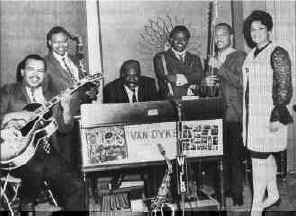 At the Chit Chat Lounge (l to r: Robert White, Dan Turner, Earl Van Dyke, Uriel Jones, James Jamerson and DJ Martha Jean Steinberg)
At the Chit Chat Lounge (l to r: Robert White, Dan Turner, Earl Van Dyke, Uriel Jones, James Jamerson and DJ Martha Jean Steinberg)
When they weren't working at Studio A they could often times be found jamming at Millie's Chit Chat Lounge on 12th Street.
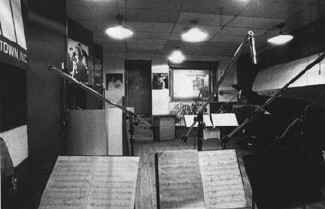
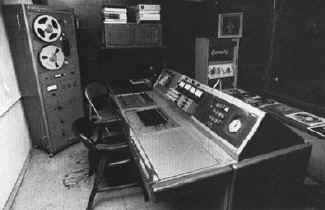
Here are the names of those musicians, broken down into the three distinct periods of the Motown Sound.
1959-1962 The early Motown hits were blues based, a product of the uncluttered approach devised by the Motown staff songwriters and producers in tandem with local blues and R&B musicians. Most of the arrangements were done on the spot by the musicians, occasionally with a simple horns background added.
The earthly, down home piano playing of Joe Hunter, Motown's first bandleader, contributed a great deal to the success of hits like "Pride and Joy" and "Come Get These Memories." Although he left in 1964, Hunter's greatest achievement was bringing together the intregal components of a world class studio band.
|
|
|
Keyboards - Joe Hunter, Earl Van Dyke, Popcorn Wylie Guitars - Robert White, Eddie Willis, Joe Messina, Larry Veeder, Dave Hamilton Bass - James Jamerson, Clarence Isabell Drums - Benny Benjamin, Richard "Pistol" Allen, George McGregor, Clifford Mack Percussion - Jack Ashford, Eddie "Bongo" Brown
Vibes - Jack Ashford, Dave Hamilton, James Gittens
Trumpets - Herbie Williams, John "Little John" Wilson, Marcus Belgrave, Russell Conway, Johnny Trudell
Saxophones- Hank Crosby, Andrew "Mike" Toney, Norris Patterson, Thomas "Beans" Bowles, Teddy Buckner, Ronnie Wakefield, Lefty Edwards, Eli Fontaine, Ernie Rodgers
Trombone - Bob Cousar, George Bohanon, Paul Riser
|
|
Motown's resounding success was a powerful magnet to Detroit's local jazz and club players, who brought with them a musical sophistication missing in the earliest recordings. Robert White's and Eddie Willis' signature guitar licks, the backbeat cooked up by guitarist Joe Messina and percussionist Jack Ashford, the heart stopping rhythmic locks by drummer Benny Benjamin and virtuoso bassist James Jamerson, the deft direction by bandleader and keyboardist Earl Van Dyke, provided the unshakeable foundation for Motown's stars.
|
|
Keyboards - Earl Van Dyke, Johnny Griffith, Johnny Gittens, Ted Sheely Guitars - Robert White, Eddie Willis, Joe Messina, Marv Tarplin, Cornelius Grant Bass -James Jamerson, Tony Newton Drums -Benny Benjamin, Richard "Pistol" Allen, Uriel Jones, Frederick Waites Percussion - Jack Ashford, Eddie "Bongo" Brown
Vibes- Jack Ashford, Jack Brokensha
Trumpet - Johnny Trudel, Herbie Williams, Floyd Jones, Maurice Davis, Billy Horner, Jon "Little John" Wilson, Russell Conway, Marcus Belgrave, Don Slaughter.
Trombone - George Bohanon, Jimmy Wilkens, Bob Cousar, Paul Riser, Don White, Carl Raetz, Patrick Lanier, Bill Johnson
Saxophone - Hank Crosby, Andrew "Mike" Terry, Thomas Beans" Bowles, Kasuka Malia, Teddy Buckner, Lefty Edwards, Eugene BeeBee" Moore, William "Wild Bill" Moore, Angelo Carlisi, Ernie Rodgers, Dan Turner, Bernie Peacock, Larry Nozero
Flute - Dayna Hartwick
Strings - Gordon Staples (concertmaster) and the Detroit Symphony Strings.
1968-1972
During this era there was a new catalyst for change in the Motown sound. Producer Norman Whitfield's psychedelic soul revolution ushered in the arrival of guitarist Dennis Coffey and Wah Wah Watson. Motown's recording schedule increased bringing in other new players. The death of Benny Benjamin, along with James Jefferson's advancing alcoholism, pushed talents like Uriel Jones and Bob Babbitt to the front. Still at Motowns core was the classic band led by Earl Van Dyke.
Ater a decade of hit making the Funk Brothers performed like a championship team; they thought their dynasty would last forever. But as Motown began to seek new horizons in Los Angeles, the musicians sensed the coming of an end to an era. Digging deep into their lifeblood, the many strains of Detroit's rich musical traditions, they redefined the boundaries of pop music one last time with the historic Marvin Gaye What:s Going On sessions.
Within a year after the release of Gaye's album, Motown moved permanently to Los Angeles, and the most prolific studio band in recording history closed shop.
|
|
Keyboards - Earl Van Dyke, Johnny Griffith Guitars _ Robert White, Eddie Willis, Joe Messina, Dennis Coffey, Wah Wah Watson Bass - James Jamerson, Bob Babbit, Eddie Watkins Drums - Richard "Pistol" Allen, Uriel Jones, Andrew Smith Percussion - Jack Ashford, Eddie "Bongo" Brown
Vibes - Jack Ashford, Jack Brokensha
Trumpet - John Trudell, Russell Conway, Herbie Williams, Floyd Jones, John "Little John" Wilson, Maurice Davis, Marcus Belgrave, Billy Horner, Don Slaughter, Eddie Jones
Trombone - Jimmy Wilkins, Bob Cousar, Paul Riser, Don White, Carl Raetz, Patricl Lanier, Paul Johnson
Saxophones - Hank Crosby, Kasuka Mafia,Teddy Buckner, Lefty Edwards, Bernie Peacock, Thomas "Beans" Bowles, Eugene "BeeBee" Mooore, William "Wild Bill" Moore, Angelo Carlisi, Ernie Rodgers, Dan Turner, Eli Fontaine, Larry Nozero, Lanny Austin
Flute - Dayna Hartwick
Strings - Gordon Staples (concertmaster) and the Detroit Symphony Strings
Arrangers and producers throughout the Detroit era - Paul Riser, Willie Shorter, Dave Van DePitte, Wade Marcus, Johnny Allen, Gil Askey, Ernie Wilkins, Jerry Long, Hank Crosby, Slide Hampton, H.B. Barnum
Motown's West Coast Studio Band.
During the mid-Sixties Motown augmented its overwhelming Detroit recording schedule with a few west Coast sessions. In addition to accommodate complex touring schedules the company often flew tapes between Los Angeles and Detroit. The majority of the hits were still being recorded in Detroit, but by the late 60s the Los Angeles operation played an increasingly important role. The Jackson 5 sessions, in fact, were recorded almost entirely in Los Angeles.
Keyboards - Mike Rubini, Joe Sample, Clarence McDonald, Don Randi, Larry Knechtel Guitars - Arthur Wright, David T. Walker, Thomas Tedesco, Louie Shelton, Adolph Green, Weldon T. Parks Bass - Wilson Felder, Carol Kaye, Bill Pitman, Ron Brown Drums - Earl Palmer, Ed Greene, Gene Pello, Paul Humphreys Percussion - Gary Coleman, Bobbye Porter, King Errisson, Joe Clayton, Sandra Crouch, Jerry Steinholtz, Emil Richards
Arrangers - Gene Page, James Carmichael, Arthur Wright, Gil Ashley
James Jamerson was inducted in to the Rock and Roll Hall of Fame in 2000 James Jamerson Who's who of the Funk Brothers Standing In the Shadows of Motown: The Story of the Funk Brothers Recording at Motown
© 2025 Created by Edie Antoinette.
Powered by
![]()
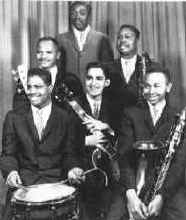 left to right: Benny Benjamin, James Jamerson, Joe Hunter, Larry Veeder, Hank Crosby
left to right: Benny Benjamin, James Jamerson, Joe Hunter, Larry Veeder, Hank Crosby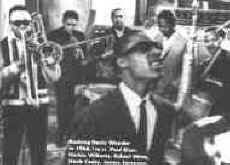 left to right: Paul, Riser, Herbie Williams, Robert White, Hank Crosby, James Jamerson
left to right: Paul, Riser, Herbie Williams, Robert White, Hank Crosby, James Jamerson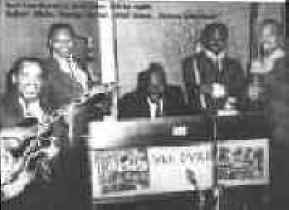 left to right: Robert White, Danny Turner, Earl Van Dyke, Uriel Jones, James Jamerson
left to right: Robert White, Danny Turner, Earl Van Dyke, Uriel Jones, James Jamerson Benny Benjamin
Benny Benjamin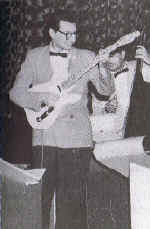 Joe Messina
Joe Messina Robert White
Robert White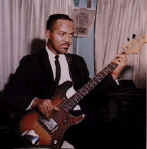 James Jamerson
James Jamerson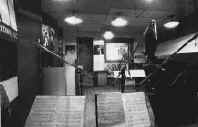 Earl Van Dyke
Earl Van Dyke Richard "Pistol" Allen
Richard "Pistol" Allen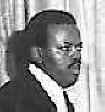 Uriel Jones
Uriel Jones Earl Van Dyke
Earl Van Dyke Eddie Willis
Eddie Willis

Comment Wall (6 comments)
You need to be a member of I Grew Up In Chicago to add comments!
Join I Grew Up In Chicago
Enjoy!
I especially love that "My Girl" track. Such sweet music to my ears.